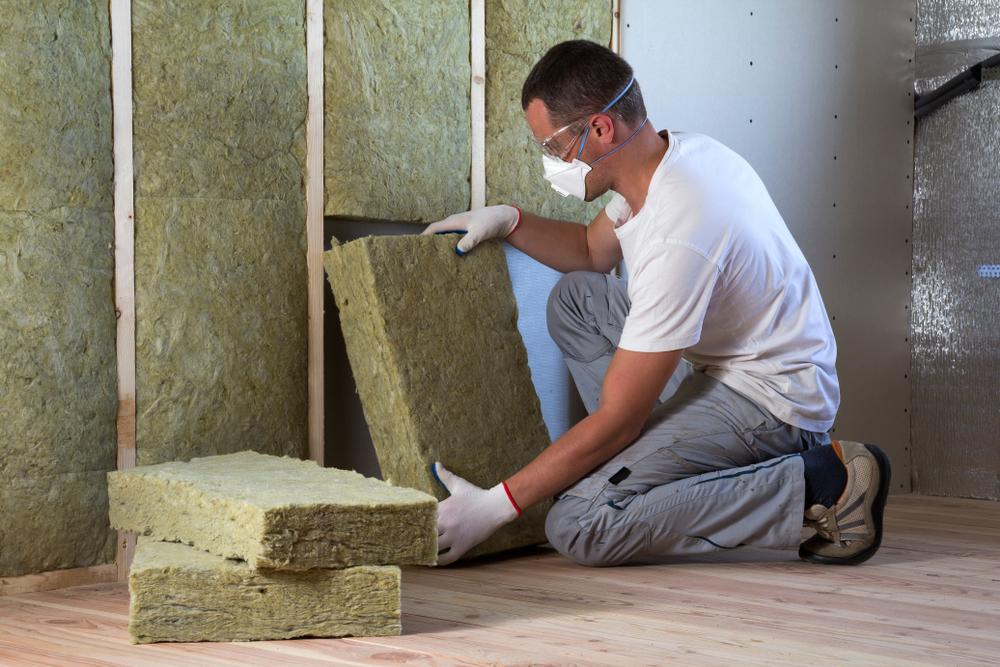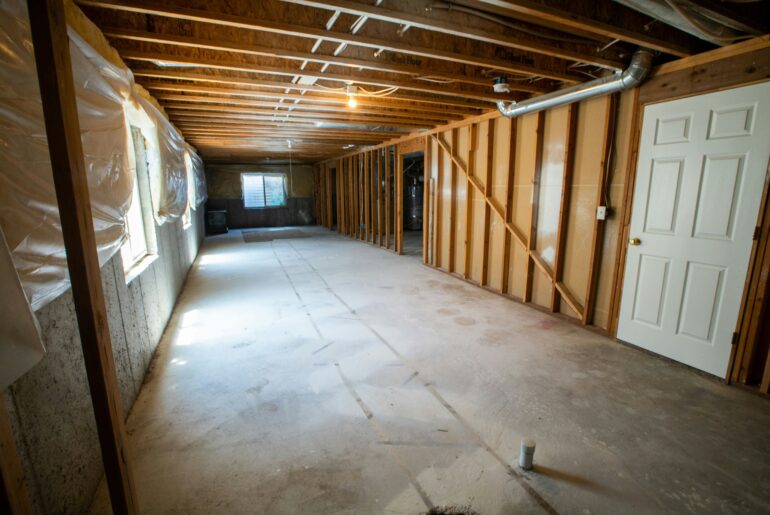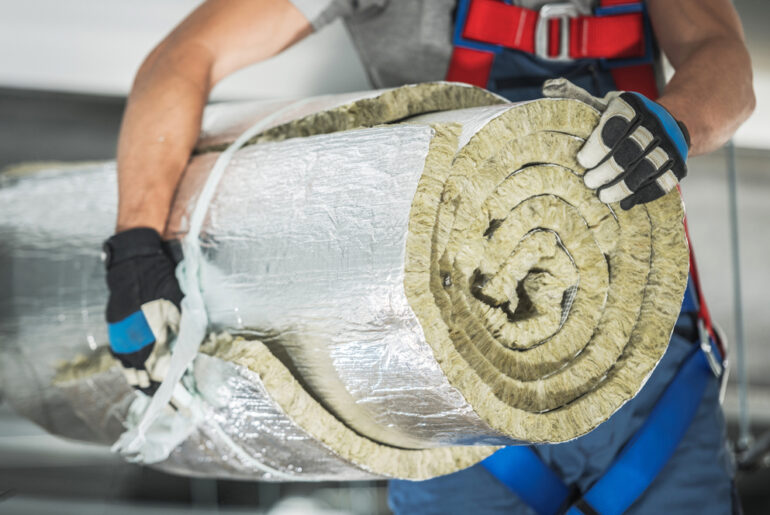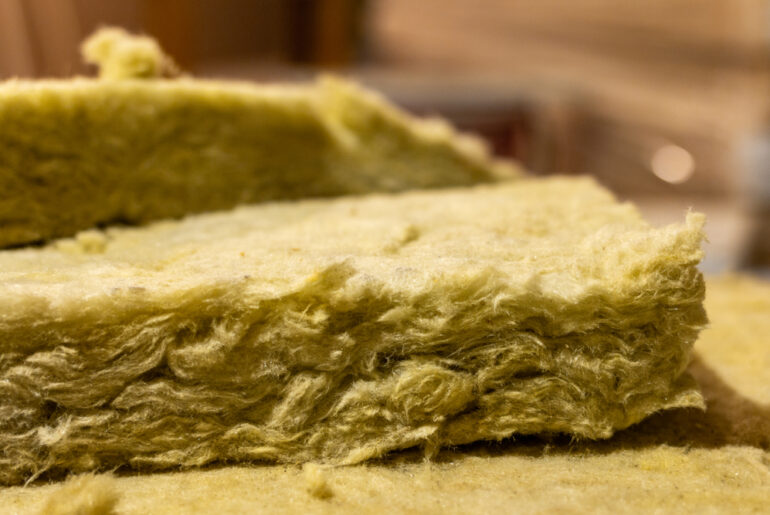When weighing up which is the best insulation product for your project you can spend hours going back and forth with specifications, budget requirements and installation issues.
Sometimes nothing seems clearcut, but with cellulose insulation, there are some areas where it comes out a winner, and others where another option comes out on top. So, where to start? What are the pros and cons of cellulose that are worth discussing?
Read on to see how we can help narrow down the answer for your project.
Where Is Cellulose Insulation Used?
Cellulose insulation is used in most areas of a building and comes in three main forms, loose blown, dry packed, and wet sprayed.
Loose Blown is used to top up and insulate new attic spaces.
Dry Pack is used to insulate external walls and is popular as a retrofitting product.
Wet Spray is not as wet as the name suggests, instead, it is mixed with an adhesive and is sprayed into open wall cavities and is ideal for installation in new projects.
It has an average R-value of 3.5 per inch, which makes it on par with many of its rival insulating materials.
Pros
There’s a lot to recommend cellulose, from its ecological credentials to its properties as an insulator:
1. Cost
One of the top recommendations for cellulose is cost, whether blown, packed, or sprayed it will win over most other insulation materials on the bottom line. You can save more money by renting the equipment and installing it yourself too.
Many of the big box retailers will let you have the equipment rent-free when you buy a minimum quantity of cellulose insulation. If you have done the math, and find you are a bag or two short of the free offer it’s probably worth picking up the extra insulation to get the rental for nothing!
The only way you are going to beat cellulose on budget is if you opt for rolls of fiberglass instead. Blown-in fiberglass costs about the same as the cellulose equivalent, so there is no point looking for a saving there.
Dollar-for-dollar cellulose is more resilient than fiberglass, lasts longer, and does a better job, so rather than cost, perhaps you should look at cellulose’s longer-term value over fiberglass.
Pretty much every other insulation material on the market today will come in at a higher price than cellulose however you measure it. So, if it wins on budget where else might it come out on top?
2. The Environment
Cellulose insulation sounds like it must be chock-full of chemicals and plastic, but it is actually made up mainly of recycled paper and is one of the most eco-friendly insulation products on the market. In fact, up to 85% of cellulose insulation material is from recycled sources.
CIMA, the industry association for manufacturers claims that if all paper waste was recycled in this way then demand for landfill in the US would be reduced by 38%.
Hemp Insulation is talked about as part of the new green wave of insulating materials, but it has to have a minimum content of 8% plastic fibers in order to hold it together. Also, finding in stock anywhere in the US is quite a challenge, with currently just one factory based out of Idaho.
Denim and Cotton insulation is made from 100% recycled material before the chemicals that retard mold growth and fire (borate) are added, but again, recent issues with supply, and the discontinuation of some products have made this insulation hard to source in large quantities.
2.5. The Environment, Again
It is likely that there will be a cellulose manufacturing plant in your state, so the distance traveled by the product, from the factory gate to your door will be minimized. This helps keep costs down, and also the issue of embodied carbon.
We all want to insulate to bring our bills down and reduce energy use, and cellulose helps in that aspect by not costing the earth to produce.
Sheep Wool insulation, made from the grey and brown reject parts of a fleece is a great alternative, but most of the batts sold in the USA have been manufactured on the other side of the planet in New Zealand, where sheep outnumber people six to one! That’s a long way for your green insulation to have to travel.
3. Moisture Control
Cellulose Insulation can help keep the structure of your home dry as it produces a wicking action, drawing moisture away from timber and releasing it into the atmosphere. This is great news if you live in either a maritime or sub-tropical humid climate zone where trapped moisture can store up all manner of problems for a homeowner.
When dense-packed or wet sprayed, cellulose insulation is hygroscopic in nature, drawing moisture from heavy concentrations and drying to the outside of a wall assembly in winter and the inside in summer.
What this means for you is that there will be less chance of mold and mildew building up where moisture has managed to penetrate and condense. Also, if there is a minor water leak somewhere, then it can oftentimes dry out rapidly and return to its original state.
Looking at the low-cost rival, fiberglass, should fiberglass absorbs too much moisture, not only will its R-value nosedive, but it will also become a superb breeding ground for mold and mildew. If fiberglass is exposed to too much water it is liable to collapse and fail completely.
4. Air Permeability
Did you know that if you live in an area that experiences high winds in Winter the wind chill factor can actually reduce the efficiency of the insulating material in your home? Dense Pack Cellulose in your walls will lose up to 10 to 15% of its R-value on those windy mid-winter nights when you need to be at your coziest.
However, compared to Fiberglass, Cellulose will actually keep you much snugger, as Fiberglass R-value under similar wind pressure conditions can be cut in half.
Fiberglass is many times more air-permeable than cellulose and is vulnerable to deterioration through contamination with dust and dirt.
5. Retrofitting and Top-Ups
If you are renovating and there is already a level of insulation in the attic, perhaps there is an older cellulose installation, or perhaps there is an inch or two of fiberglass, there is no need to take it all out and start again. As long as the new material is going into the required depth any old fiberglass can remain in place unless it is too badly deteriorated.
If the attic has old cellulose it will likely still be doing its job, just slightly less well due to settlement, and perhaps a reduced depth that was once compliant with the Building Code which has since been updated. All you will need to do is remove any obviously poor sections (check the roof is in good condition – old, damaged insulation can act as a good tell-tale indicator) and then top up to new code levels.
It’s not a good idea to try and top up existing blown-in insulation with batts, rolls, or foam board as these materials tend to crush the fibers, thereby lowering the performance of the insulation.
Cons
Cellulose doesn’t get all the positive press, however, and there are some areas where it might not suit your project.
1. Attic Access Issues
If you are considering using loose fill blown-in cellulose insulation in your attic then you need to assess whether you will require regular access to the attic. Is there plant, i.e. HVAC equipment in the attic, that might require servicing?
The depth required on the attic floor to reach the level required to meet Building Codes means that you will not be able to walk anywhere in the space. Crushing, or compressing loose-fill cellulose will compromise the R-value.
If you need to regularly access the attic in this way then it would likely be better to insulate the rafters and bring the attic into the conditioned portion of the building within the thermal envelope. Cellulose is not usually a suitable insulation material for the rafters, it can be done, but will not usually achieve the depth required in colder climate zones.
2. Don’t Go It Alone
Whether dense-packing, blowing, or wet-spraying cellulose it is a messy two-person job, and while not hard to get right if you are a seasoned hand at doing things yourself, be prepared to call in favors and have help.
In the attic, be prepared for the low visibility of cellulose in the air. It can be difficult to make sure that you have created enough coverage without adequate lighting too. A top tip is to spray paint or otherwise mark up depths on trusses before you start.
3. Settlement of Blown In Insulation
Blown in attic insulation will settle over time. Settlement will reduce the overall R-value of cellulose insulation, so the initial installation job needs to come in at a depth over and above the projected final settlement depth.
This calculation should be printed on the label that comes on the sacks the cellulose is supplied in. Level guages should be attached to roof timbers indicating insulation depths so that they are clearly visible from the loft hatch for future monitoring purposes.
Should the level drop below the recommended level then the insulation will have to be topped up to maintain the R-value required in your climate zone.
4. Location Issues
If your property is in an exposed location and constantly subject to high winds then there is a risk that the cellulose fiber insulation in your attic space will be inclined to drift. All attics require venting to prevent moisture from becoming trapped and causing problems in the roof structure.
These same vents can, in areas where there are consistently high winds, cause the cellulose to shift, leaving some areas exposed, which will lower the overall effectiveness of the insulation. If vents then become blocked on the other side of the attic, it could create further issues.
When Cellulose Insulation Is NOT The Best Choice?
- You require a high degree of insulation and have limited depth in the wall cavity which means you will not achieve the R-value required.
- You need to insulate below the ground floor, i.e. in the crawl space beneath the home. Not only is installing any kind of cellulose impractical in this location, but it would also be too vulnerable to excessive moisture, vibration (from the impact of furniture and footfall above), and pests.
- You require regular access to your attic space.
When Cellulose Insulation Is The Best Choice?
- You have a limited budget but want to have value for money.
- You want a practical solution to the question of eco-friendly insulation.
- You live in a humid or marine climate zone.
- You need to top up the existing insulation on your attic floor.
- You are an experienced and competent DIYer.
- You have an external wall cavity of a minimum of five-and-a-half inches.
- You have a wall cavity of four inches but plan to use continuous insulation, i.e. mineral wool, on the outer sheathing.





